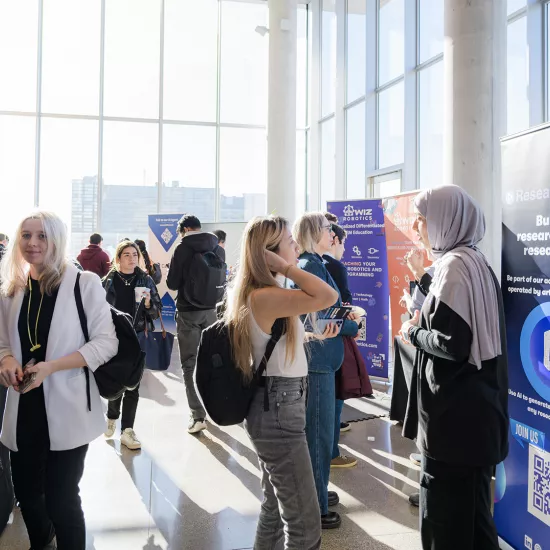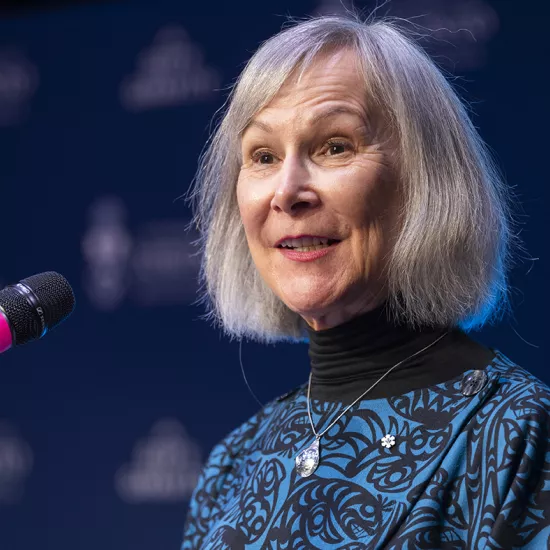Two UTM researchers earn grants from fund honouring past U of T president

Two UTM professors are expanding the reach of their research after receiving a funding boost for state-of-the-art research tools
Jessica Burgner-Kahrs, an associate professor and associate chair of computer science, and David Samson, an assistant professor of anthropology, are among 33 U of T grantees awarded a John Evans Leadership Fund infrastructure grant from the Canadian Foundation for Innovation (CFI). The grants are named in honour of the late Dr. John Evans, a medical researcher, Rhodes scholar and the University of Toronto’s ninth president (1972-1978).
The grants are designed to help Canadian universities retain top talent by providing researchers with the highly specialized tools they need to be leaders in their field.
Burgner-Kahrs, an expert in continuum robotics (robots that are flexible like worms) and director of the Continuum Robotics Laboratory, moved her laboratory from Germany to UTM during the past year. She plans to use the $750,000 grant to purchase equipment to create continuum robot systems, operated or monitored by a human user through an immersive interface. The equipment she’ll need includes items such as flexible cameras, electromagnetic tracking systems, sensing devices and devices for human-robot interactions.
“I know we need these items to take the next step in our research,” Burgner-Kahrs says, adding it took teamwork to get the grant. “I felt as if the whole university was behind me. People assisted with the budget and gave me great feedback on the proposal. The level of support was just amazing.”
The systems she envisions creating with the new equipment will allow their operators to reach unreachable places in a non-destructive, minimally-invasive manner, and perform operations and manipulate objects with unprecedented accuracy and dexterity.
“I foresee using these systems for minimally invasive surgery or to conduct non-distractive inspections on expensive capital goods, such as the jet engine on an aircraft,” says Burgner-Kahrs. “It’s going to be great. My graduate students and post-doctoral fellows are so excited.”
Samson specializes in investigating the link between sleep, health and cognition in human and non-human primates. He plans to use the grant money ($458,660) to build a unique sleep laboratory that is specifically focused on testing evolutionary hypotheses about the function of dreams. One way that Samson will use the new lab is to to simulate past environments using virtual reality, offering the same stimuli that once existed, including predators roaming the area during prehistoric times.
“What better way to increase student engagement than to involve video games?” says Samson with a laugh.
Samson will also test threat simulation theory – the idea that dreams prepare people for waking activities – and will compare Western dreams with those of hunter-gatherer societies. In addition, he plans to use dim lighting to examine melatonin onset, simulating how it impacts the hormones and how ancestral humans’ sleep would have been affected by firelight.
“I’m very excited about the grant,” says Samson. “The lab will take a while to build, but once it’s up and running, I can do any experiments I come up with, all without leaving Ontario. Especially in times like these, that flexibility is very important.”



